This is a three part series that describes all the most important Italian phrases you can use at an Italian restaurant. Part 2 deals with useful expressions for ordering food in Italian once you are inside the restaurant. If you haven’t already visited Part 1, we suggest you check it out before proceeding!
Part 1 – How to Request and Reserve a Table in Italian
Part 2 – How to Order Food in Italian
Part 3 – How to Ask for the Check/Bill in Italian
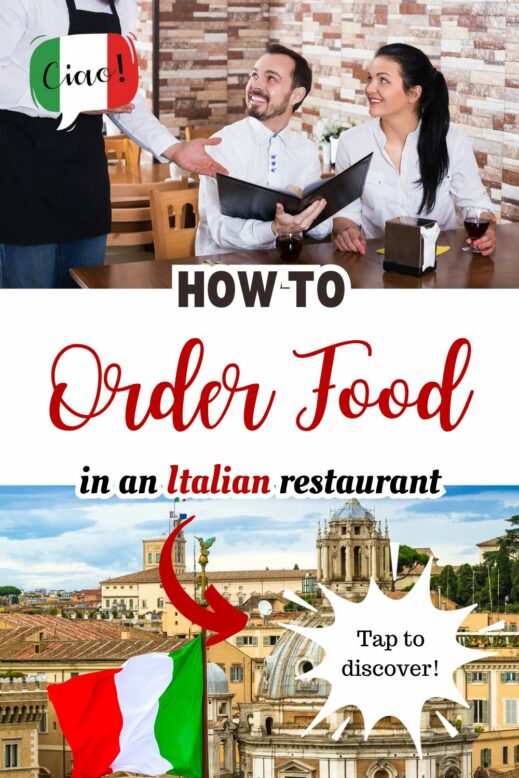
At this point, we’re going to imagine that you’re somewhere along the coast of Italy. It’s just after 8pm (which is the average time Italians tend to eat) and the sole (sun) is slowly setting. You and your amici (friends) have just sat down at the perfect table in the ristorante (restaurant) of your choice overlooking the Mediterranean sea, and a dashing waiter approaches, notebook in hand and ready to take your order.
The first thing you will want to do, if there isn’t already one on the table, is ask for a menù (menu).

Posso vedere il menù, per favore?
May I see the menu, please?
Può portarmi la lista dei vini, per favore?
Could you bring me the wine list, please?
Possiamo vedere la lista dei dolci, per favore?
Can we see the dessert menu, please?
Quanto costa il menù a prezzo fisso?
How much is the fixed-price menu?
Avete un menù per bambini?
Do you have a kids’ menu?
If you’ve brought your children along, here are a few important questions you may wish to ask after requesting a kids’ menu.

Possiamo avere un seggiolone per il bambino / la bambina?
Can we have a highchair for our son / daughter?
Avete dei pastelli / delle matite colorate / un foglio per colorare?
Do you have any crayons / pencil crayons / colouring paper?
Potremmo avere un piatto / bicchiere di plastica, per favore?
Could we have a plastic plate / cup, please?
Avete un cucchiaio / forchetta / coltello per bambini?
Do you have a child’s spoon / fork / knife?
Here are some additional questions you may wish to ask your waiter while you are browsing through the menu.

Cosa ci consiglia?
What can you recommend?
Cos’è questo piatto?
What is this dish?
Quali sono i piatti del giorno?
What are today’s specials?
Qual è la specialità della casa?
What’s your local specialty?
Avete dei piatti regionali?
Do you have any regional dishes?
If you need more time to make your decision, you can use the following phrases.
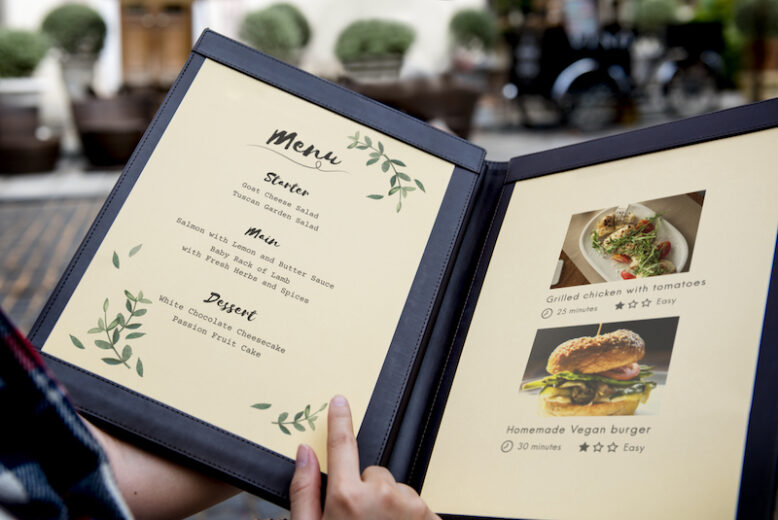
Non siamo ancora pronti per ordinare.
We aren’t ready to order yet.
Non abbiamo ancora deciso.
We haven’t decided yet.
Potrebbe darci ancora qualche minuto?
Could you give us a few minutes?
We’ve arrived at the moment of truth – it’s now time to order your food! Here are the most basic phrases you will need to tell the waiter what you want to eat.

Scusi, vorremmo ordinare adesso.
Excuse me, we’d like to order now.
Io prendo… / Io prenderei…
I’ll have…
Note: Prenderei is used instead of prendo when you decide to order something despite still having some doubts about it really being what you want! The meaning is similar to the English phrase “I think I’m going to go with…“
Io vorrei…
I would like…
Per me [food name] grazie.
For me [food name] thank you.
Io [food name] grazie.
(As for) me [food name] thank you.
Note: After a few orders have been taken, Italians often abbreviate the phrase to just io (I) so as not to unnecessarily repeat the phrases io prendo / io prenderei / io vorrei.
Prendiamo una pizza da dividere in due.
We’ll share a pizza.
Di primo / secondo prendo…
As a first course / main course, I’ll have…
Come primo / secondo vorrei…
As a first course / main course, I’d like…
Può portare tutto insieme?
Can you bring everything at the same time?
I secondi li ordiniamo più tardi.
We’ll order our main meal later on.
Some people have very particular dietary needs, so it is important to clarify them with the waiter before you order your food.

Note: If you see an adjective ending in –o/a, know that the -o ending is used by those who identify as male, whereas the -a ending is used by females (e.g. vegetariano = masculine, vegetariana = feminine).
Sono vegetariano/a.
I’m vegetarian.
Sono vegano/a.
I’m vegan.
Sono celiaco/a.
I can’t eat gluten. / I have Celiac Disease.
Sono intollerante al lattosio.
I’m lactose intolerant.
Questo piatto è adatto ai vegetariani / vegani?
Is this dish suitable for vegetarians / vegans?
Com’è cucinato questo piatto?
How has this dish been cooked?
Questo piatto contiene carne / uovo / noci…?
Does this dish contain meat / eggs / nuts…?
Sono allergico/a alle noci / ai latticini / all’uovo…
I’m allergic to nuts / dairy products / eggs…
Non posso mangiare [food name].
I can’t eat [food name].
È piccante?
Is it spicy?
Once the waiter has taken your order, there are a few additional questions you may wish to ask, especially if you find that something is missing on the table, or you decide to change your order.

Possiamo avere un’altra bottiglia di X / altri grissini per favore?
Can we have another bottle of X / more breadsticks please?
Può portare le posate / un bicchiere / una forchetta / un cucchiaio / un coltello?
Could you bring us some cutlery / a glass / a fork / a spoon / a knife?
Potrei avere X al posto di Y?
Could I have X instead of Y?
If you’ve been waiting for your food for a long time, you may wish to ask how much longer it will take to arrive – just in case they’ve forgotten about you. (This has happened to me on many occasions!)

Il nostro cibo sta arrivando?
Is our food on its way?
Il nostro cibo arriverà tra poco?
Will our food be ready soon?
Stiamo aspettando da tanto tempo.
We’ve been waiting for a long time.
Unfortunately, not every restaurant experience is destined to be pleasant, be it due to mixed up orders or unsatisfactory meals. Here are a few common complaints you might need to make.
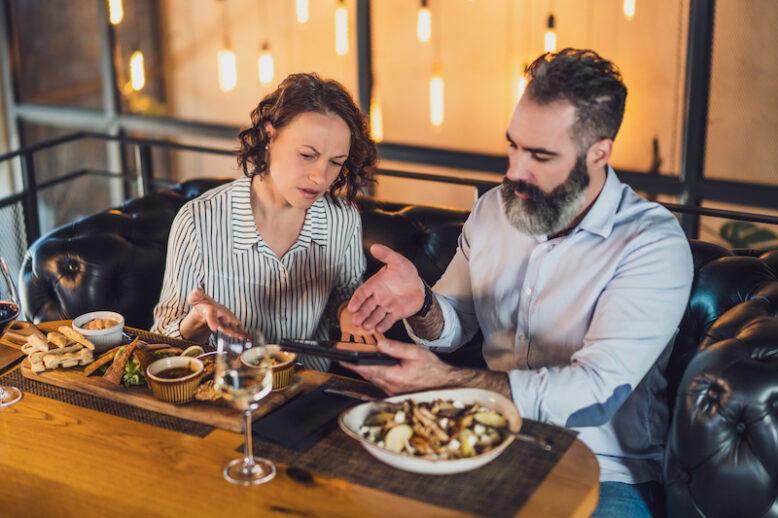
Scusi, non è quello che ho ordinato.
Excuse me, this isn’t what I ordered.
Penso che sia il piatto di qualcun altro.
I think this is someone else’s meal.
Sembra che il pesce sia poco cotto.
It looks like the fish is underdone.
Potrebbe riscaldarlo un po’ di più? È un po’ freddo.
Could you warm it up a little? It’s a bit cold.
But most of the time, you will end up using the following phrase to express your satisfaction.

Era tutto buonissimo / squisito, grazie.
It was delicious, thanks.
A posto (literally “in place” or “sorted”) is a very handy term that Italians use at the end of a meal, especially when they have finished eating and are ready to leave.
Tutto a posto, grazie.
We’re fine / all done, thanks.
(said in response to the question “Tutto a posto?”)
Io sono a posto, grazie.
I’m fine / all done, thanks.
(response to waiter asking if you want something else to eat/drink)
If you aren’t able to finish your meal, you may wish to bring the leftovers home with you. Although this is common custom in many English-speaking countries, Italy still has a way to go in its acceptance of so-called “doggy-bags” – probably because Italian portions are rarely so large that you cannot finish them in one sitting. In fact, if you do happen to leave something on your plate, the chef may assume that you did not enjoy your meal.
That said, I’ve asked to take food away many times in Italy and, despite receiving the occasional “oh-she-must-be-foreign” look, my request has never been denied.

Posso portare a casa gli avanzi?
Can I bring the leftovers home / have a doggy-bag?
And to conclude, who could forget the all-important question which can be asked at any time during your meal.

Mi scusi, dov’è il bagno?
Excuse me, where is the bathroom?
What the Waiter Might Say to You
Here are a few phrases the waiter will probably say to you throughout your meal. Don’t worry too much about memorising them, but do try to become familiar with how they sound.

Prego, accomodatevi.
Please, sit down.
Volete vedere il menù?
Would you like to see the menu?
Ecco il menù.
Here is the menu.
Posso portarvi qualcosa da bere?
Can I bring you something to drink?
Acqua naturale o frizzante?
Still or sparkling water?
Che cosa vi porto?
What would you like?
Per primo / secondo?
And as a first course / main course?
Ecco a lei.
Here you are.
Tutto bene?
How is everything? / Is everything okay?
Tutto a posto?
How is everything? / Is everything okay?
Volete il caffè o un dolce?
Would you like a coffee or dessert?
Volete vedere il menù dei dolci?
Would you like to see the dessert menu?
Common Dishes and Drinks in Italian
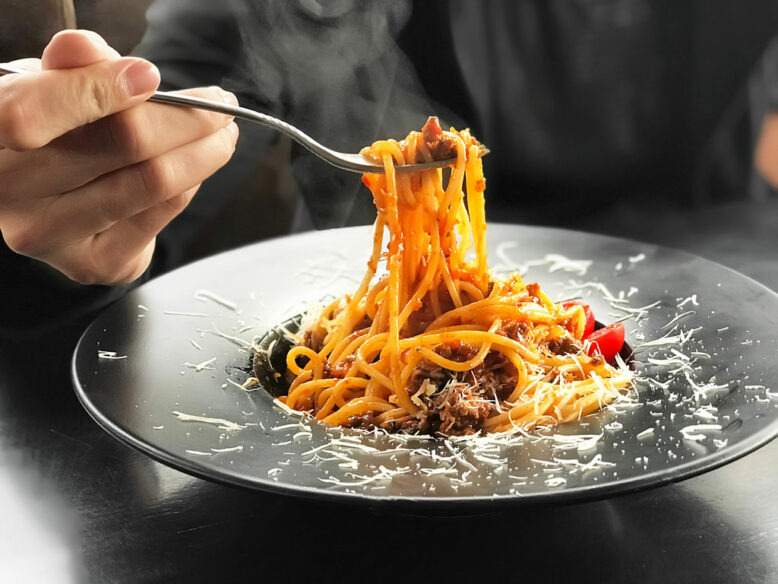
First course (Primo)
- la pasta = pasta
- gli spaghetti = spaghetti
- le lasagne = lasagna
- il risotto = risotto
Main course (Secondo)
- la pizza = pizza
- il pesce = fish
- il pollo = chicken
- il manzo = beef
- il maiale = pork
- la bistecca (ben cotta / al sangue) = (well-done / rare) steak
Side dishes (Contorni)
- le patate al forno = baked potatoes
- le verdure grigliate = roasted vegetables
- la peperonata = sweet bell peppers with olive oil
- le patatine = french fries
- l’insalata = salad
Dolce (Dessert)
- il gelato (al cioccolato / alla crema) = (chocolate / cream) ice cream
- il tiramisù = tiramisu
- il cannolo = cannoli
- il panettone = panettone
- la panna cotta = panna cotta
- il sorbetto = sorbet
Drinks (Bibite)
- l’acqua naturale = still water
- l’acqua frizzante / gassata = sparkling water
- l’acqua minerale = mineral water
- una bottiglia d’acqua = a bottle of water (one litre)
- una mezza bottiglia d’acqua = a small bottle of water (half a litre)
- il vino rosso = red wine
- il vino bianco = white wine
- un bicchiere di vino = a glass of wine
- la birra bionda = light beer
- la birra rossa = red beer
- la birra scura = dark beer
- una birra piccola / media / grande = a small / medium / large beer
- un caffè = a coffee
- un espresso = an espresso
- una tazza di tè = a cup of tea
- una camomilla = a chamomile tea
- un cappuccino = a cappuccino
- una cioccolata calda = an Italian-style hot chocolate
- un liquore = a liqueur
Here concludes our article about ordering food in an Italian restaurant. The final step is learning how to ask and pay the check, which we’ll cover in Part 3.
Go to Part 3 – How to Ask for the Check / Bill in Italian
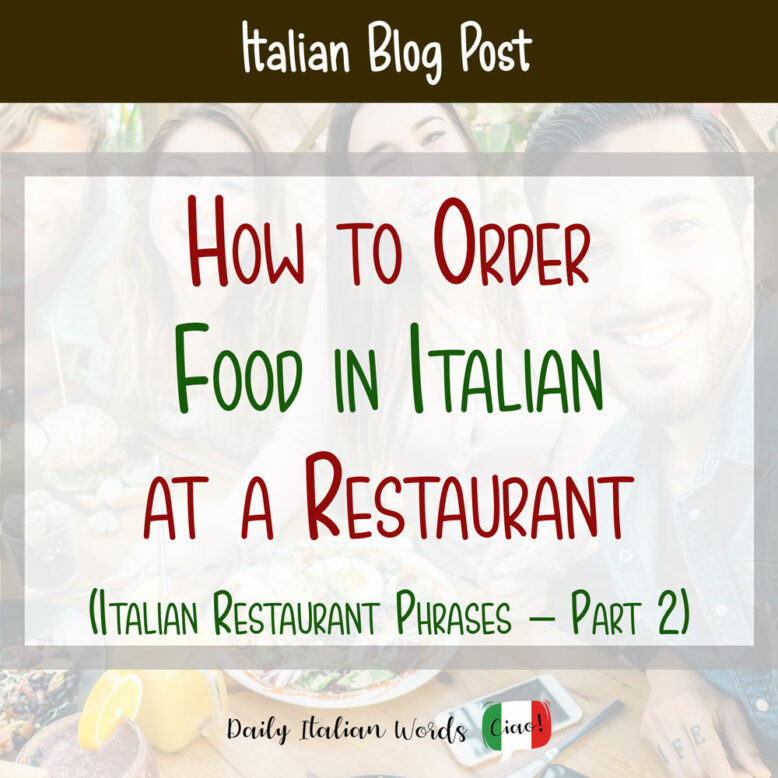
Heather Broster is a graduate with honours in linguistics from the University of Western Ontario. She is an aspiring polyglot, proficient in English and Italian, as well as Japanese, Welsh, and French to varying degrees of fluency. Originally from Toronto, Heather has resided in various countries, notably Italy for a period of six years. Her primary focus lies in the fields of language acquisition, education, and bilingual instruction.


